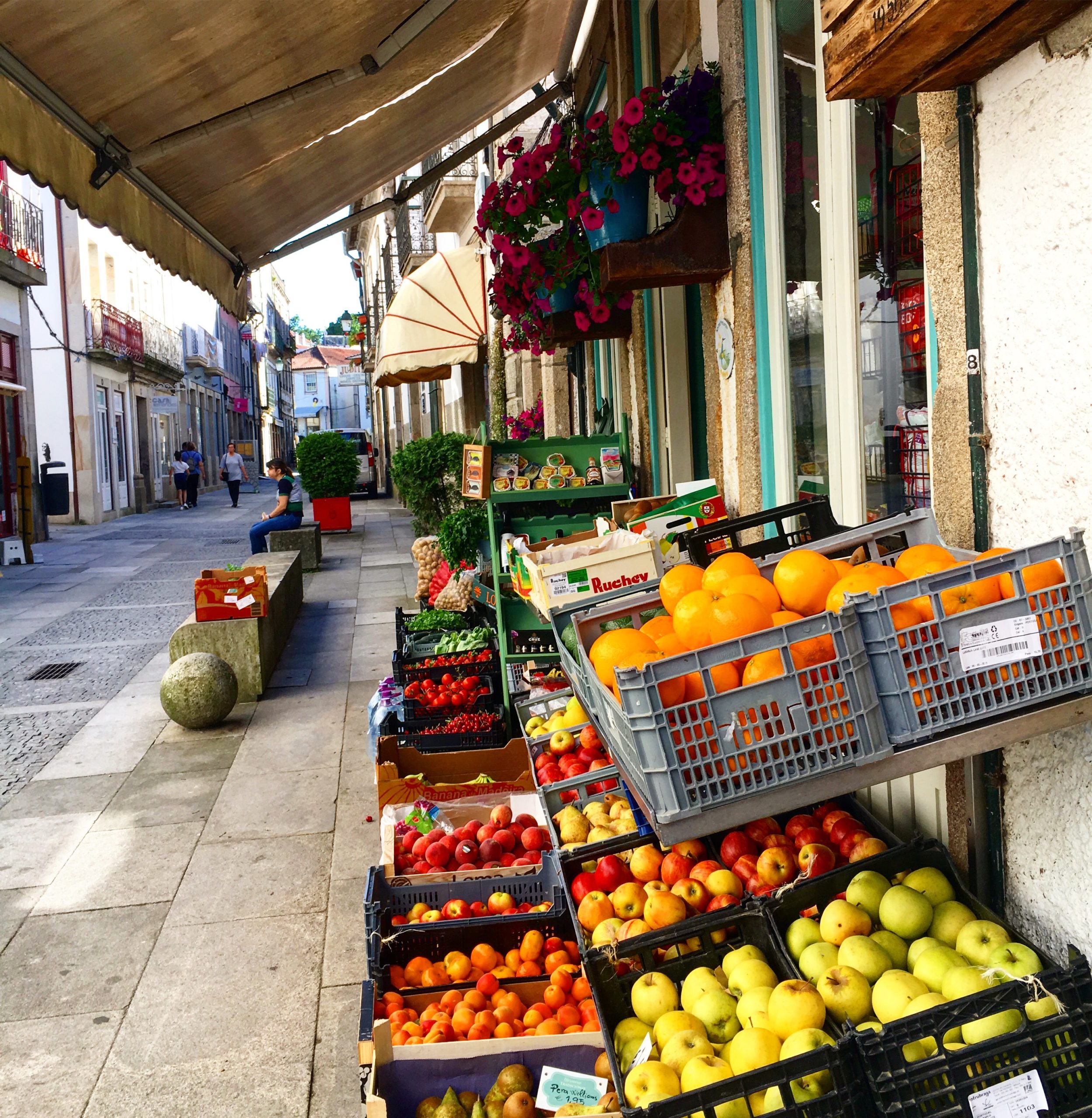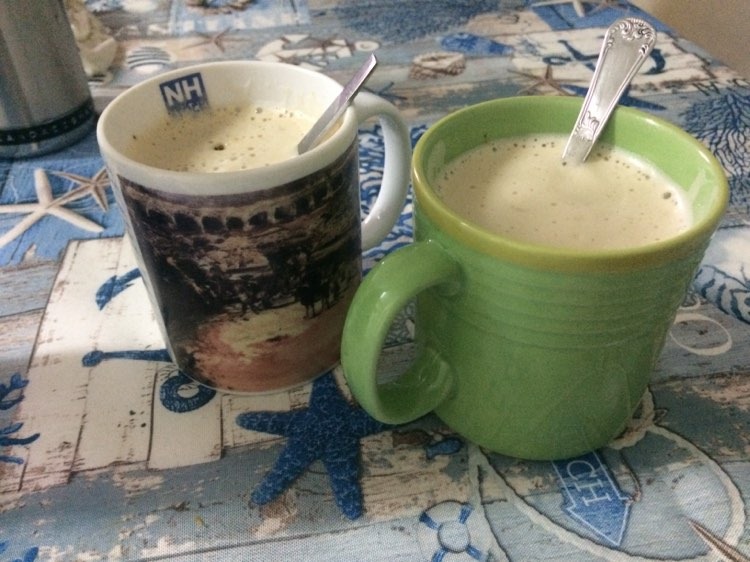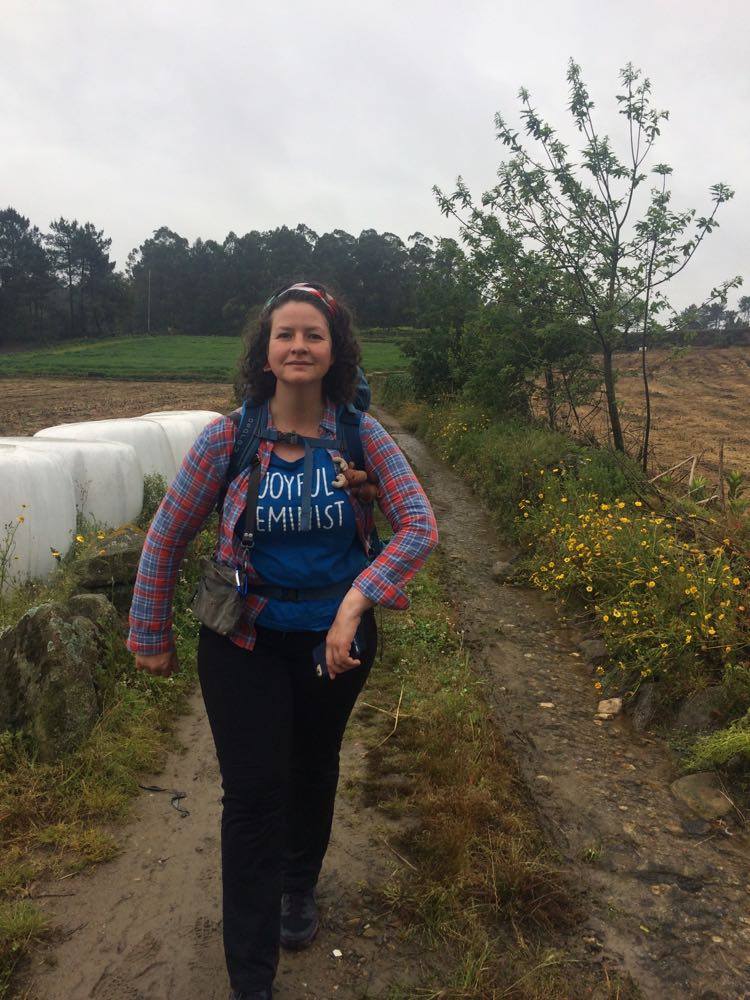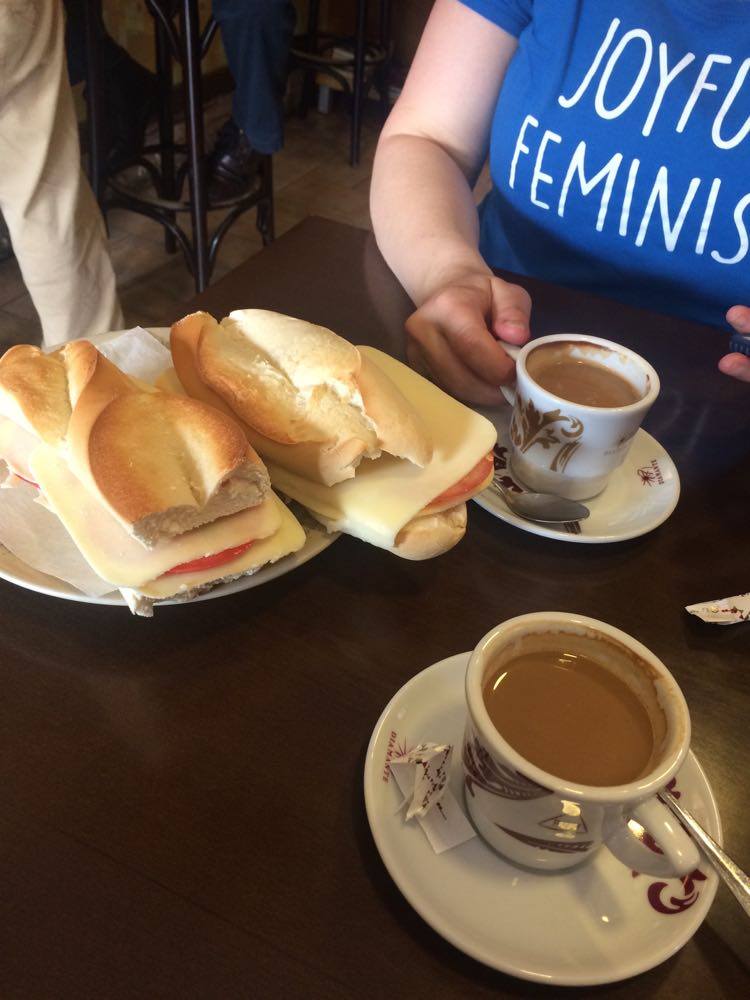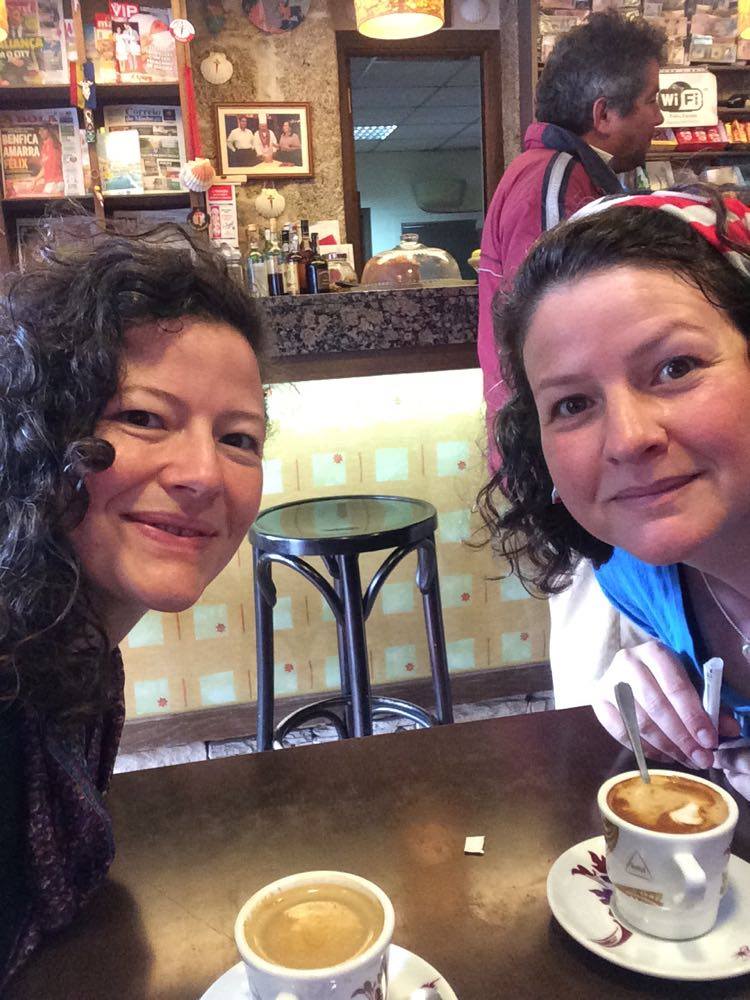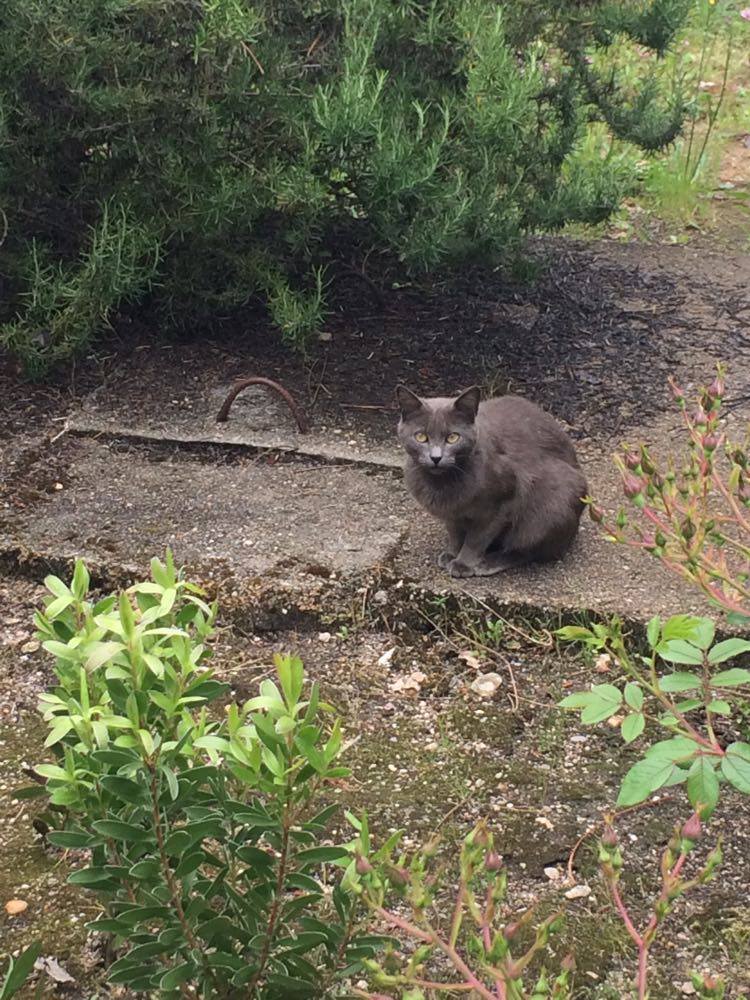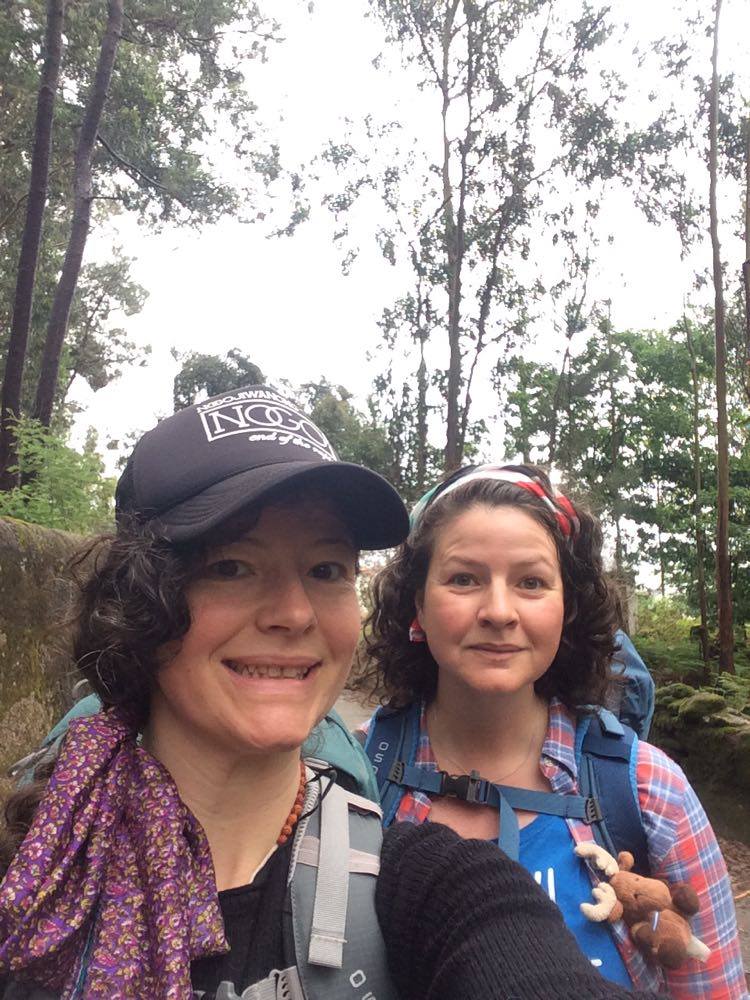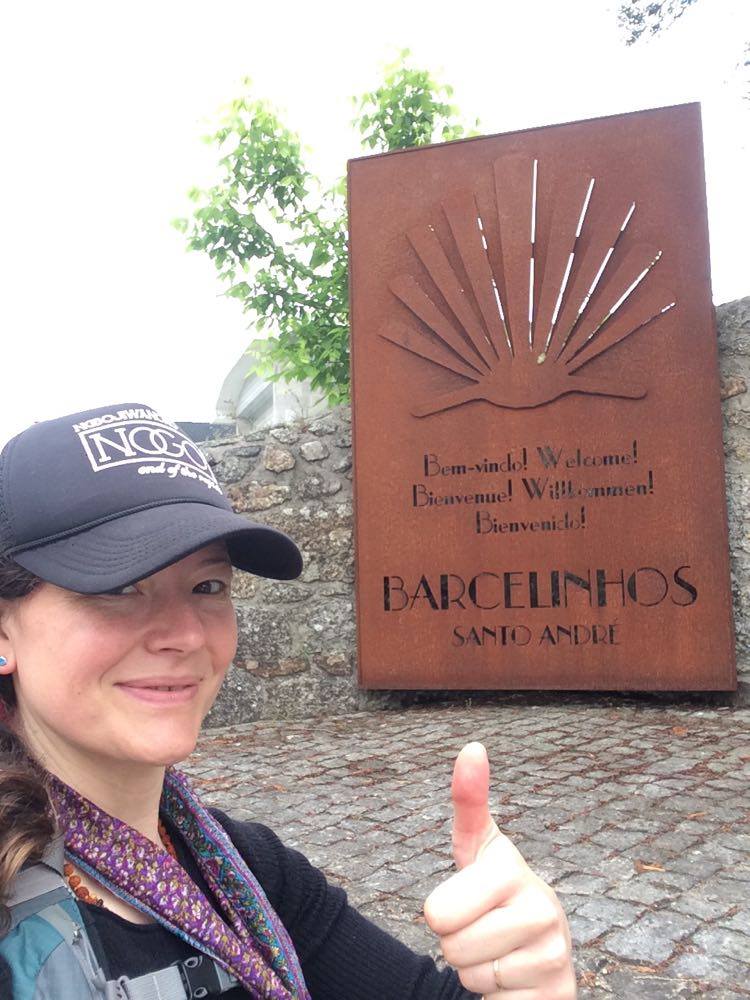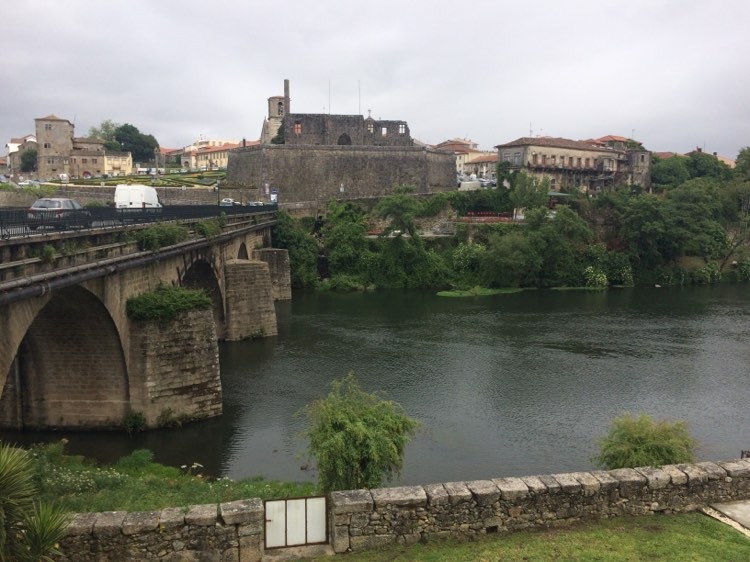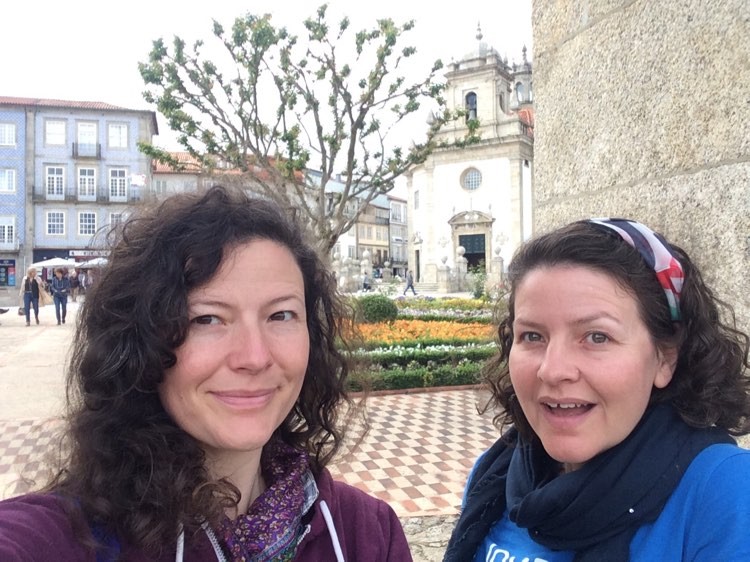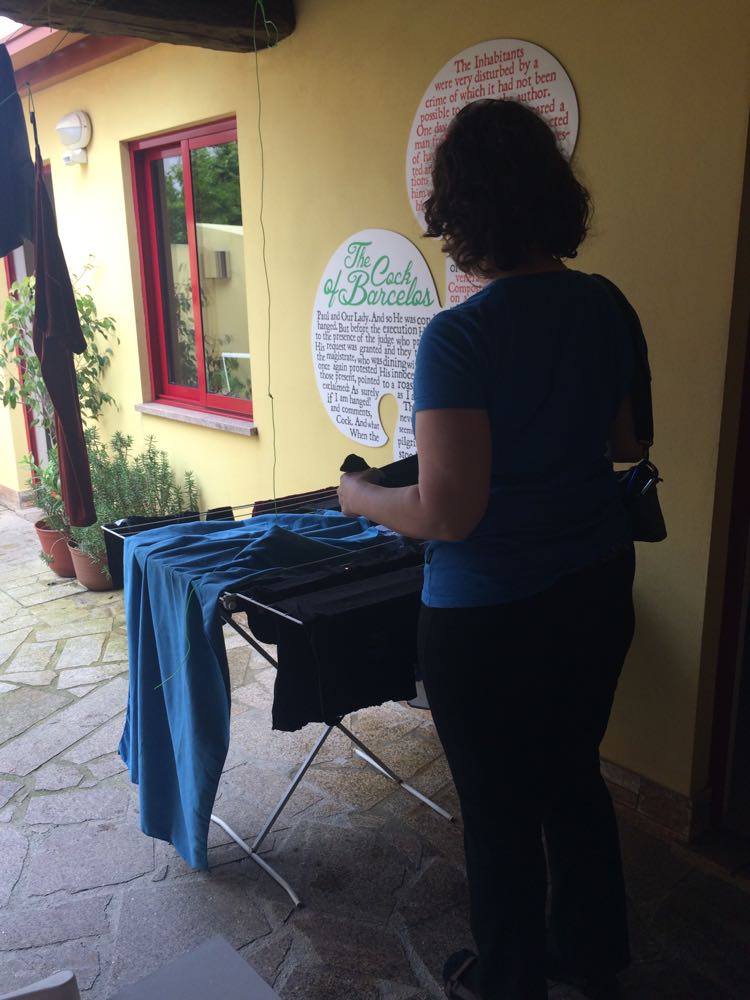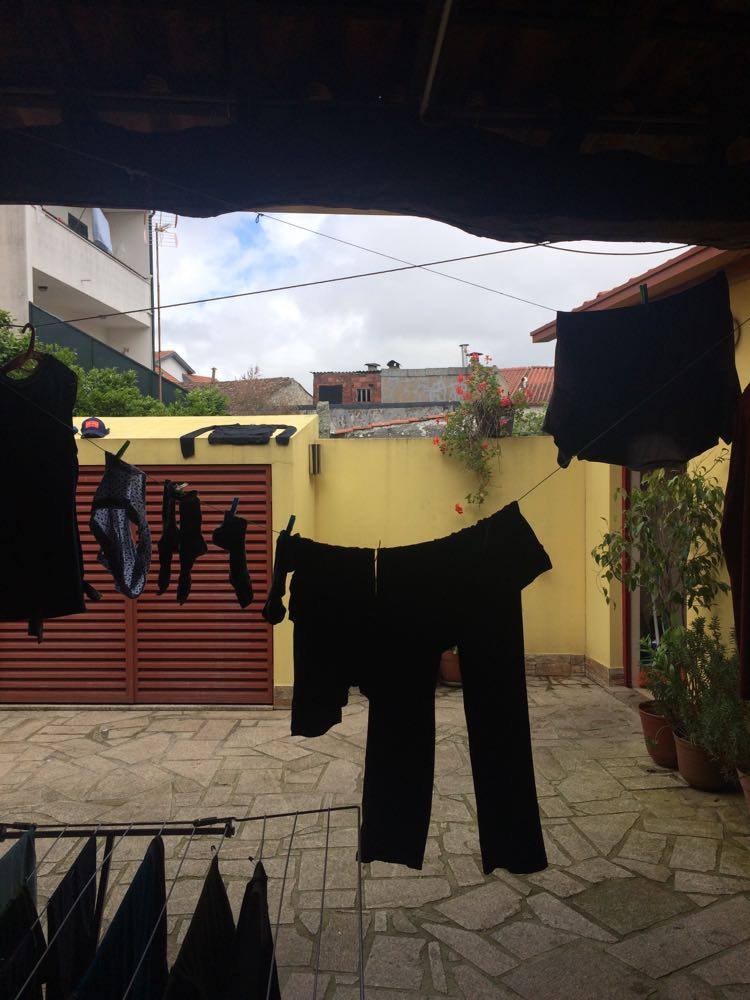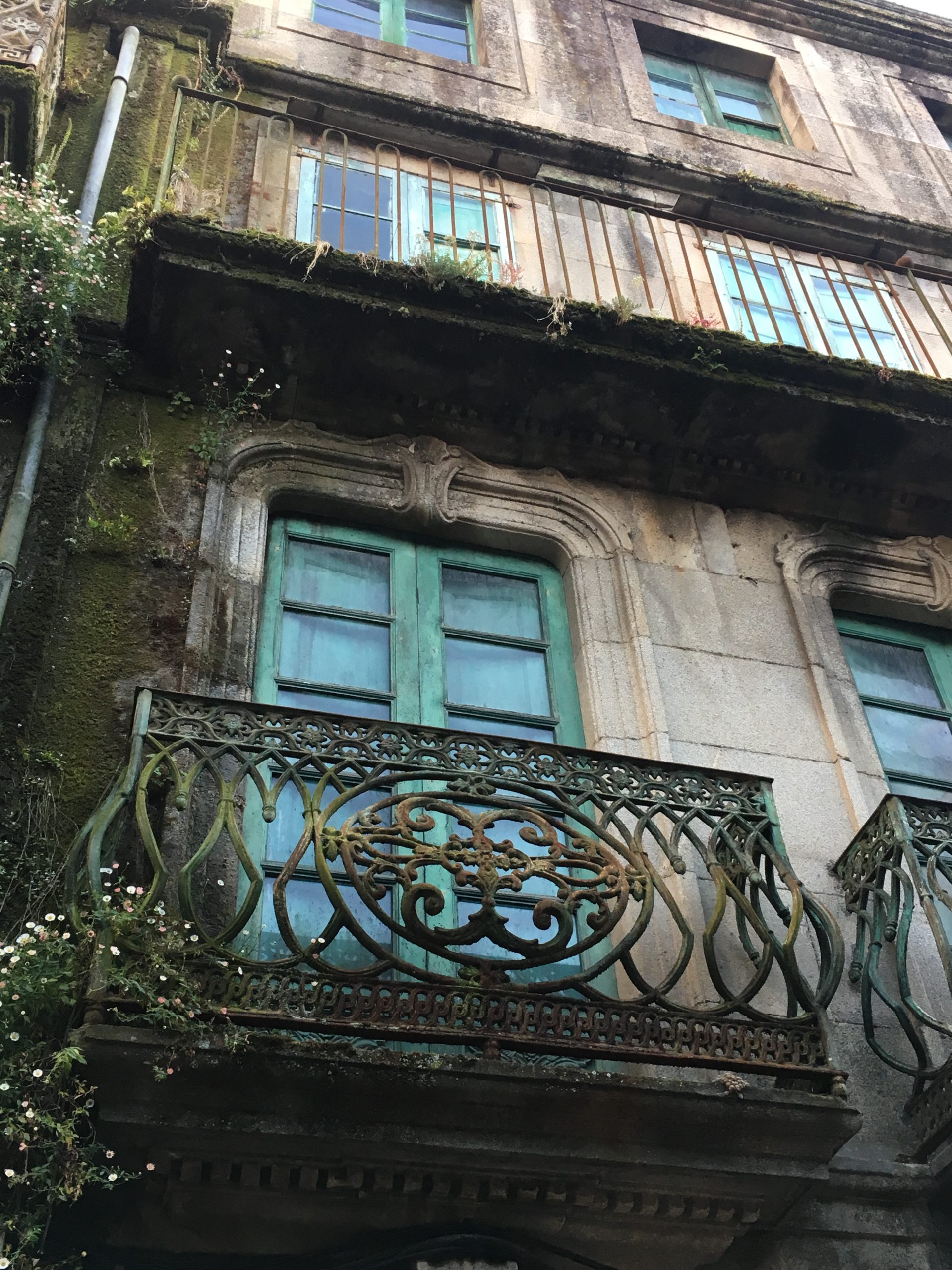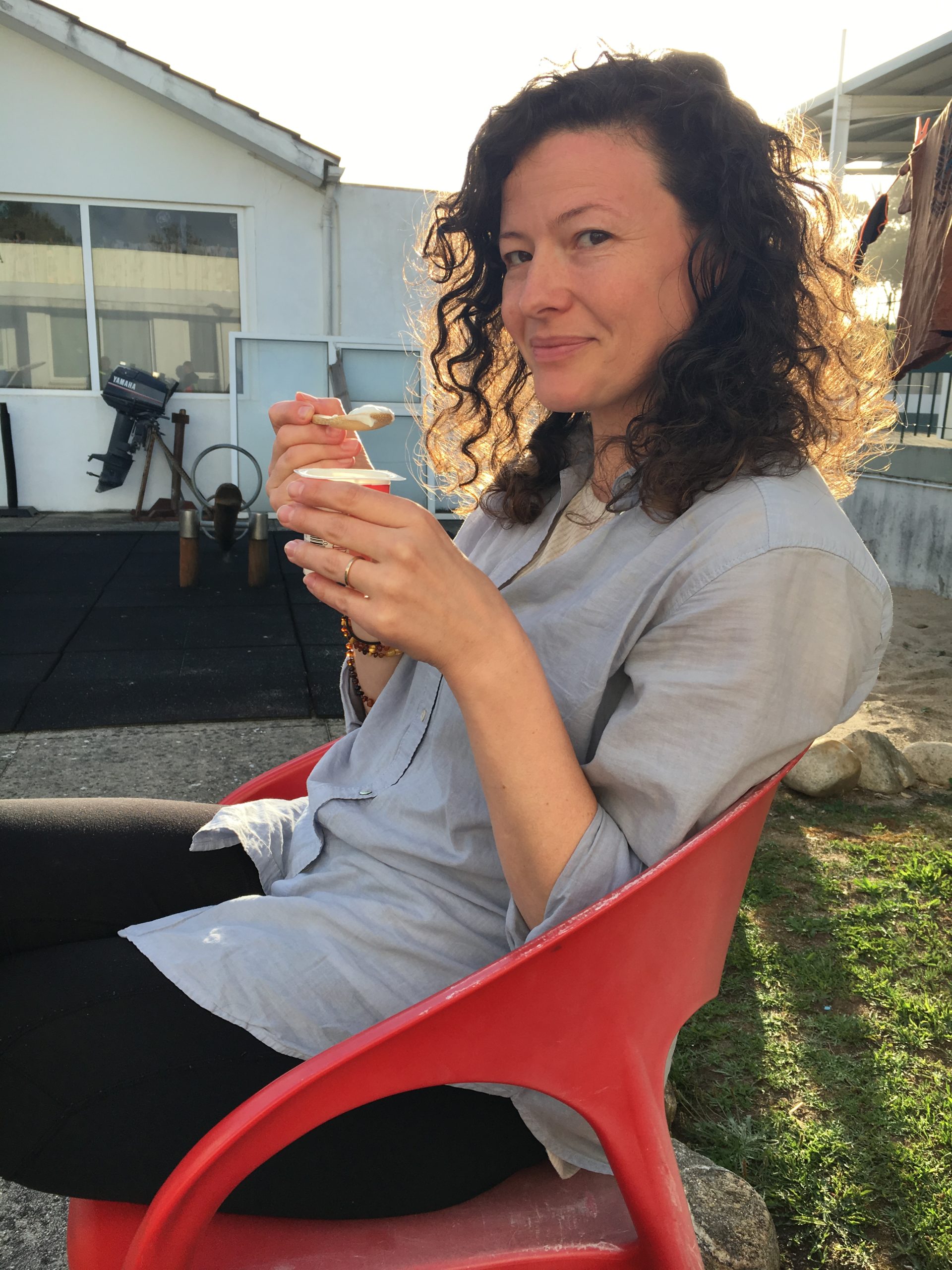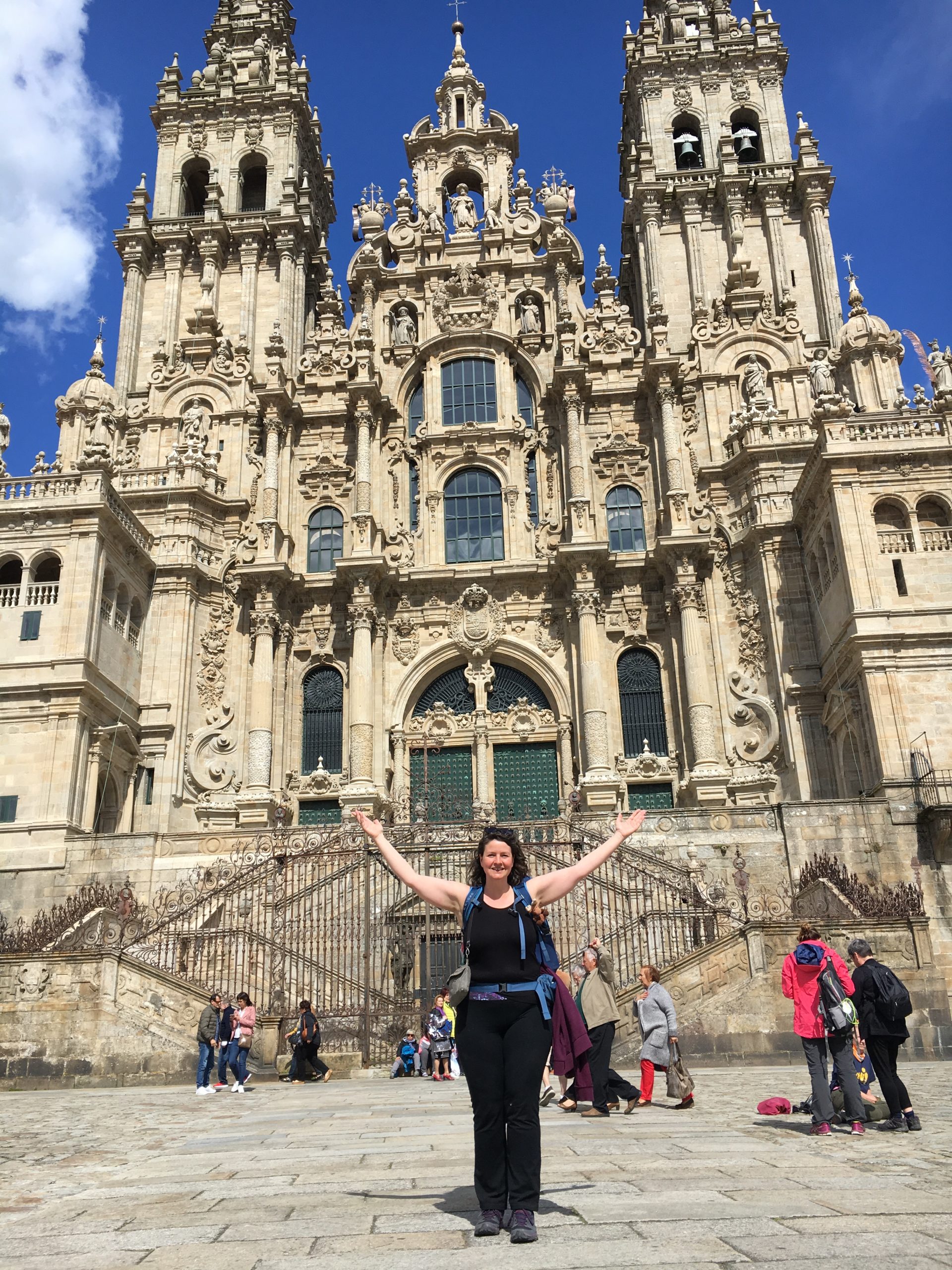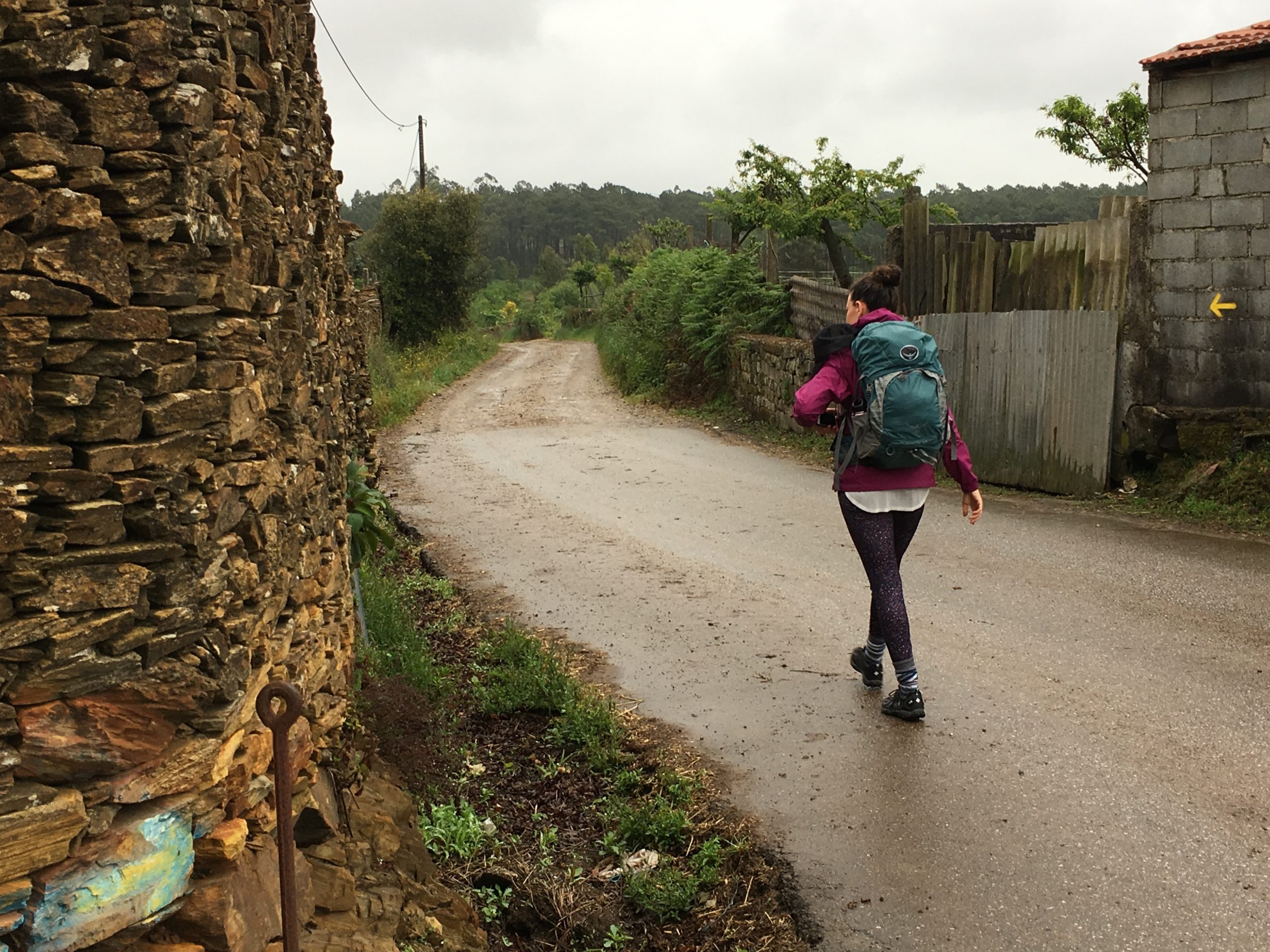
Camino Day 3 – Rates to Barcelos
5 hours walking, 20.3 km walked
(Walking time includes breaks, breakfast/lunch, etc)
With two full days of walking under our belt, and not much sleep the first night, you’d think we’d be ready to sleep through anything. One of our roommates – half of a really lovely Irish couple – warned everyone in advance that he was a loud snorer, and offered ear plugs. But I don’t think anyone was prepared for this kind of snoring – sort of a sound like a dragon fighting with and then consuming a passenger jet as it was taking off. I’d declined the ear plugs, but Sammi had some spares, and so I did manage to get a few hours of sleep.
So we were up at 6:30am, and had some instant coffee (a life-saver – it’s not exactly delicious, but it does help you get out the door) in the sitting room at the Albergue before setting out on another grey and misty day. By 7:30am we were on the road again.
The morning’s route took us through back roads, dirt farm paths, flax fields, and a fragrant forest that we think was eucalyptus trees. It was good walking weather, as the day wore on – still overcast and moody, but not wet or cold.
We spotted our first ‘official’ Camino marker, telling us we had 208km to Santiago, and more pilgrim’s shrines started popping up, featuring St. James himself as a pilgrim (the sea shells are a symbol of St. James, and of pilgrims, as are the staff and gourds, traditional pilgrim gear). This shrine was in a niche in a wall between two farm fields, and covered with tokens left by pilgrims on the Camino de Santiago.
This is also the point where we started to see other pilgrims more frequently, often saying ‘Bom Caminho!” as we passed them by at rest stops, like the cross waymarker above, which are a frequent sight along the way. We also started to recognize people a the albergues in the evenings, and had conversations in passing throughout the day.
At about 9:30am, we stopped for a proper meal at Pedra Furada, which was one of our most memorable stops along the way – delicious tomato and cheese sandwiches (Sammi says it’s because they used salt, which is something you don’t find on the table a lot along the Caminho), and two coffees each because they were so good and comforting after a wet morning.
The walk for the rest of the day, through farms and the Portuguese countryside, was full of shrines, flowers, fruit, and happily, cats – by this point we were really missing our furry companions, so cat-sightings were always welcome. The cats were less excited to see us than we were to see them.
By noon we’d arrived in Barcelos, and here we made a bit of a mistake; reading in Brierley’s guidebook that this was a very pretty town, and feeling a bit tired after the past two nights with little sleep, we thought that we could stop here, rest up a bit, enjoy the town, and make a big push the next day. So we went to the Albergue Cidade de Barcelos, and settled in as some of the first guests to arrive for the day. Because there were no staff in when we arrived, we went down the street to a neighbouring pub, and they gave us a key to let ourselves in. It’s a small, clean, and fairly comfortable albergue, with good kitchen and laundry facilities, and a welcoming atmosphere. Unfortunately, we were too tense to enjoy it, because before long we were starting to stress – had we really screwed up by stopping there for the night?
Barcelos is a nice town, in lots of ways – there’s some great architecture, and some parts of the town are very picturesque. And of course, there’s the Cock of Barcelos, an image that will be familiar to anyone who’s ever taken a walk through Little Portugal in any city. But as welcoming as the albergue was, the town had been a bit over-sold by Brierley in the guidebook, and as a consequence, we had added a couple of extra walking hours to the next day that we probably shouldn’t have.
We walked around that afternoon, trying to find a decent dinner (the nachos with cheese weren’t the thing, and not particularly delicious), and peered in the windows of shops selling religious figures and folk art (those little figurines in both pictures are funeral processions, in the window of an undertakers). Feeling a bit deflated, we spent the evening looking at train schedules, strategizing how we could hop ahead a bit and be back on track. We were outside of the 100km perimetre that you must walk in order to qualify for the certificate at the Pilgrim’s Office in Santiago, but it still felt a bit like rule-breaking to consider taking a train trip, so we spoke in hushed tones or communicating via messenger so the other pilgrims wouldn’t overhear.
At the albergue, we washed our clothes – when you only carry two pairs of pants, two shirts, etc. you really have to wash clothes pretty often. As we settled down to sleep for the night, we had agreed on a plan – in the morning, we’d head for the train station, do our best to catch the first train in the morning to the town we should have walked to the day before, and continue from there. I think we were both a bit stressed about the idea of trying to work out train schedules and tickets, but we slept well that night.
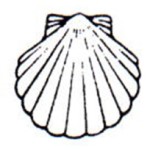
Follow our Caminho Portugues adventure!
Landing Day in Porto
Day 1 – Porto to Vila Cha
Day 2 – Vila Cha to Rates
Day 3 – Rates to Barcelos (you are here)
Day 4 – Barcelos to Ponte de Lima
Day 5 – Ponte de Lima to Rubiaes
Day 6 – Rubiaes to Tui
Day 7 – Tui to Porriño
Day 8 – Porrino to Redondela
Day 9 – Redondela to Pontevedra
Day 10 – Pontevedra to Caldas des Reies
When I’m done posting these, I’ll also post an article with my collected advice for anyone thinking of walking the Caminho/Camino, and I’ll link it here!
Photos by Candace Shaw and Samantha Shaw
